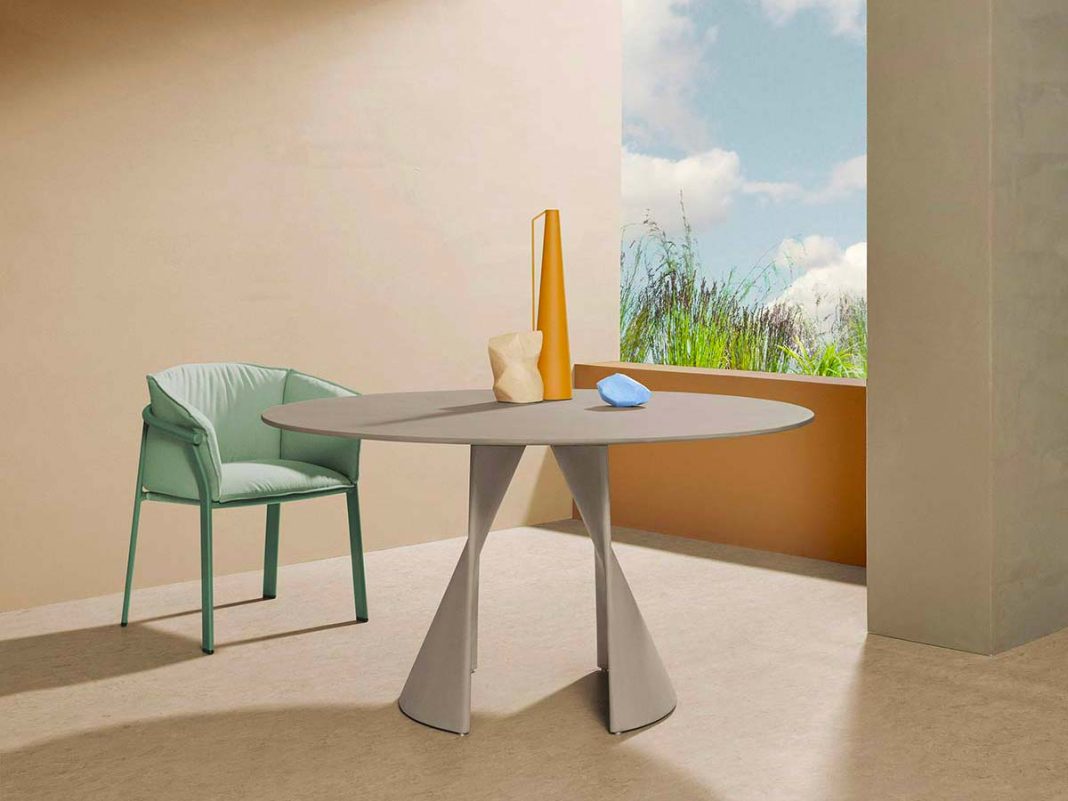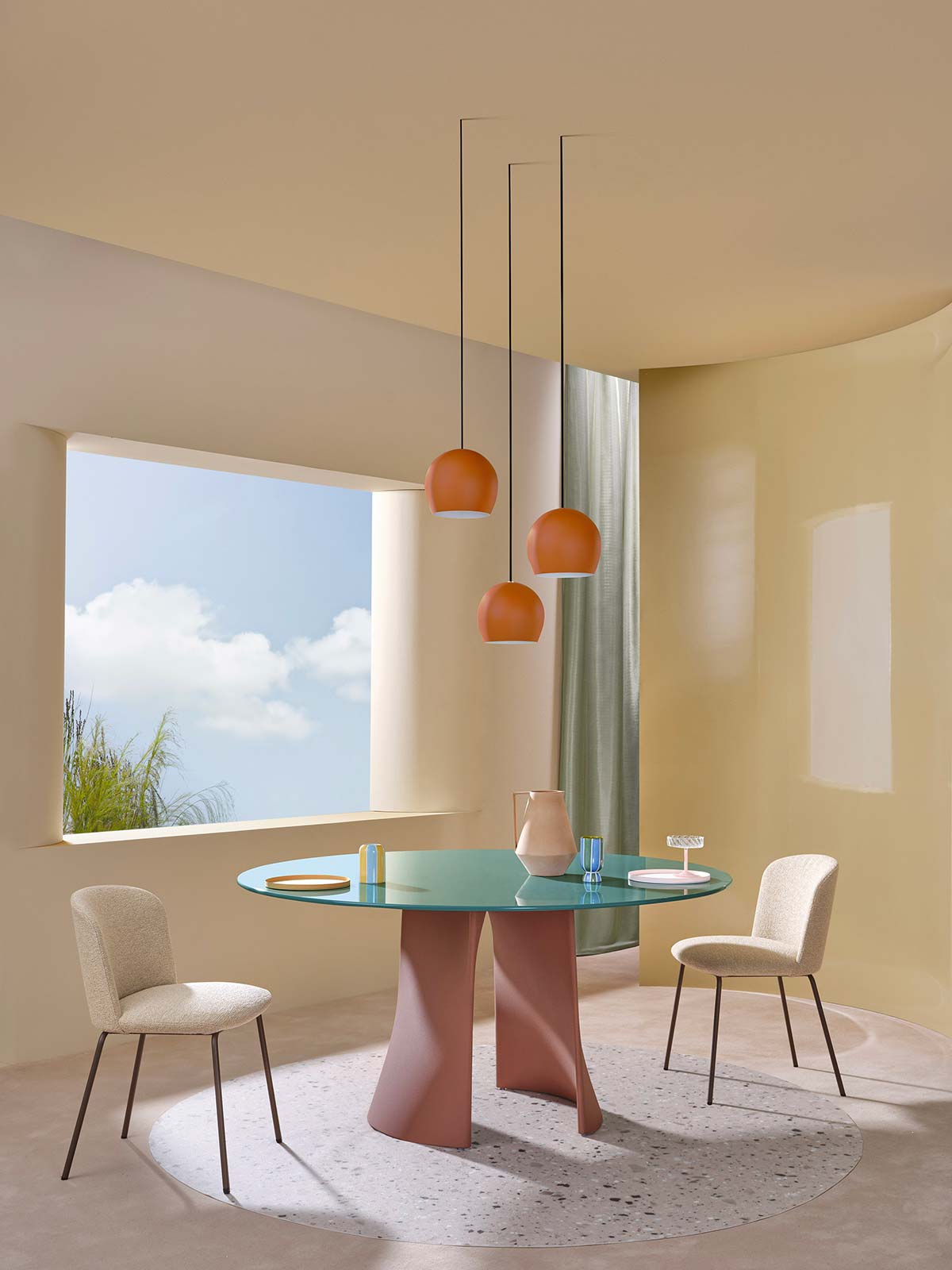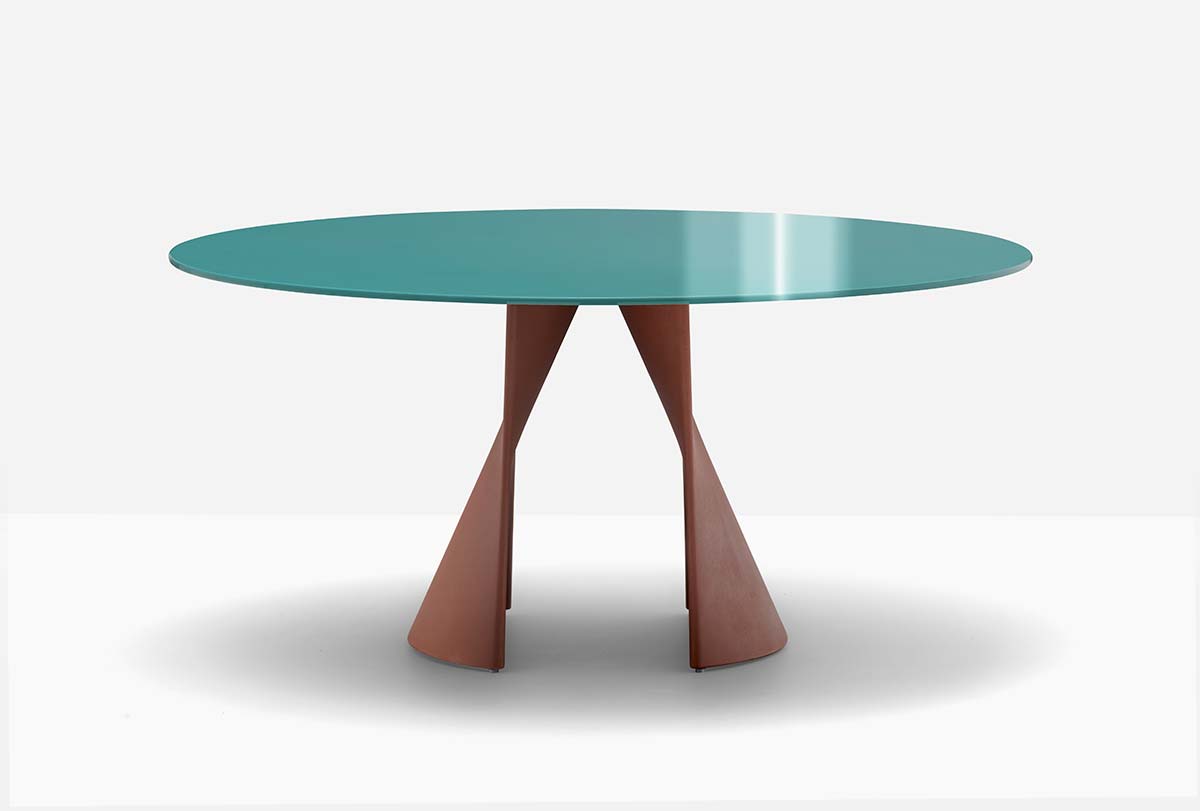
Pedrali celebrates its 60th anniversary this year, but its constant innovation, in terms of design, make it an infinitely youthful, fresh company. At the same time, experimentation with materials helps to define the firm’s distinctive identity.
Not everyone knows that the company founded in 1963 by Mario Pedrali began its activity precisely with the first outdoor furnishings in wrought iron. In the 1990s Pedrali introduced the use of plastics, expanding the fields of application in its collections, especially for the contract sector, until at the start of the 2000s, with the headquarters at Manzano, the collections in wood became a major part of the overall catalogue. From one material to another, one sector to another, the fil rouge has always been elegant minimalism and ergonomic design.
So Pedrali reaches the present day, expanding its research on materials, whose objective is not just new aesthetic expressions, but also the achievement of optimal performance in fine décor solutions. Today there is a focus on concrete, a material already approached with the Caementum table, and now taken to a new level with the Anemos table designed by the duo Pio & Tito Toso.


Anemos has simple architectonic forms, to reinterpret a material typical of the construction industry with extraordinary lightness and malleability. The distinctive feature of Anemos is the base, formed by two concrete shells separated and fixed on the top (in laminate or Fenix), which like a structural membrane break free of their image of weight, taking on a flexible, sinuous profile thanks to the double curvature. This shape makes it possible to use the concrete in a minimal thickness. The result is a table that seems to be sculptured by wind, light in appearance but stable and solid at the same time, thanks to the weight that permits it to support tops of large size.
The materiality is enhanced by tactile characteristics that create a shaded matte surface in tones of concrete or clay. The many available finishes (gray or clay colored concrete, glossy layered lacquer, cement or Fenix finishing in various colors) encourage a playful approach to hues and combinations of bases and tops. Anemos perfectly reflects the versatility of the company itself: it adapts to contemporary interiors and outdoor spaces, entering domestic settings, contract applications, offices and co-working facilities.
Art direction Studio FM, Styling Studio Salaris – Photo © Andrea Garuti








